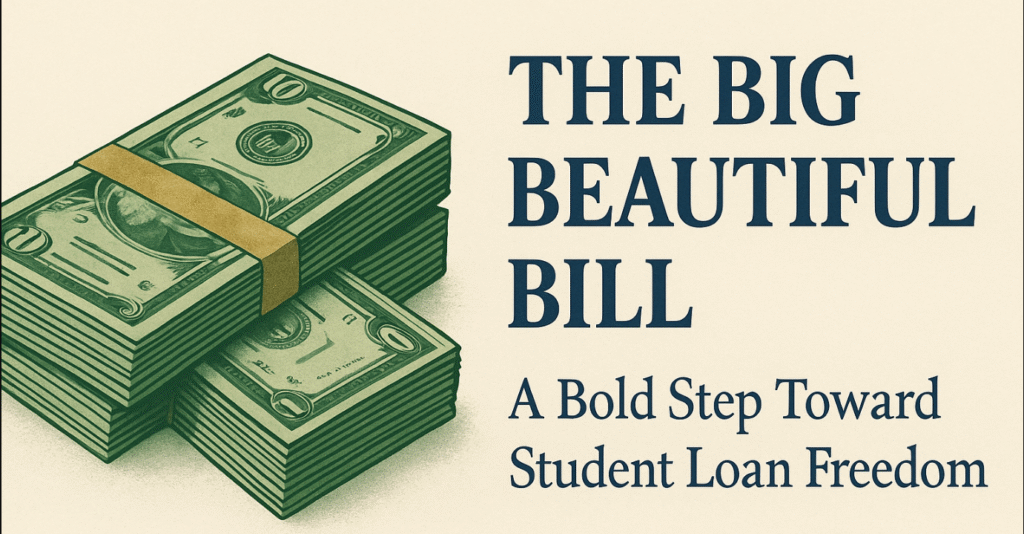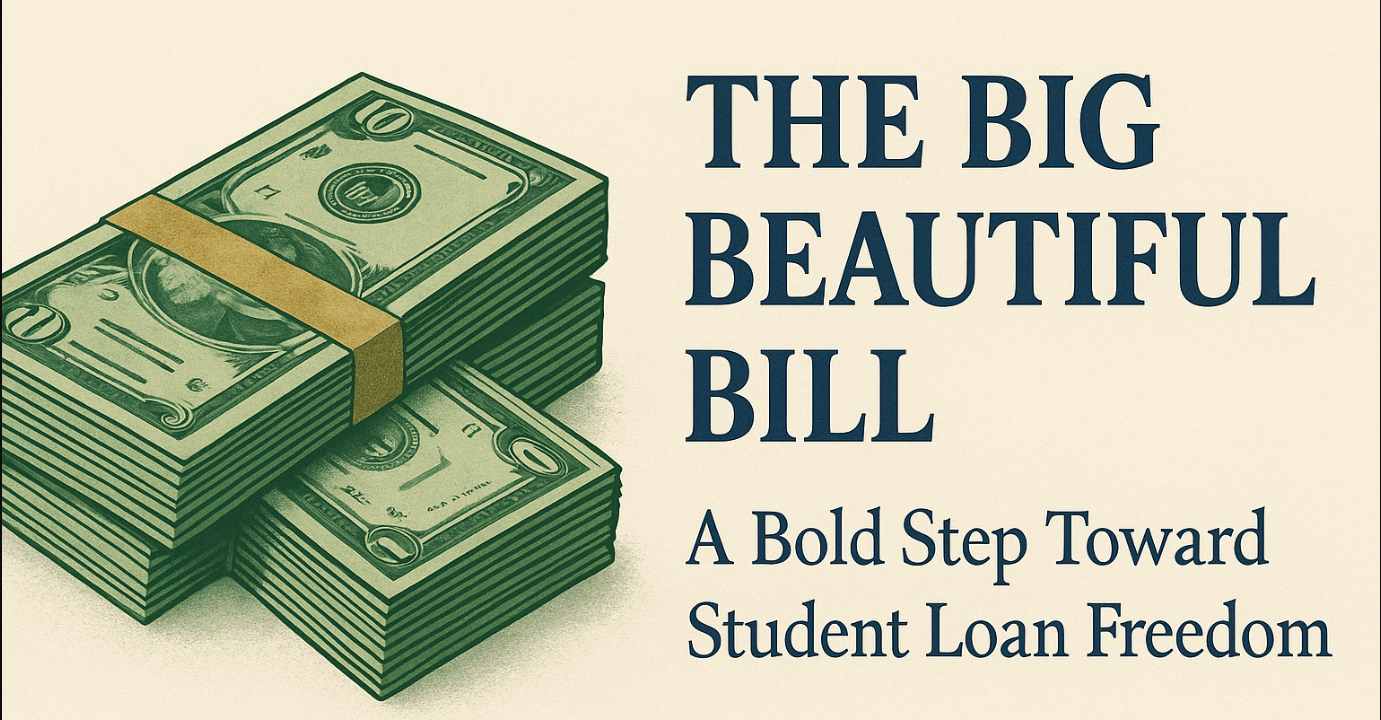In the face of rising educational debt and increasing pressure on young professionals, a new legislative proposal, known as the Big Beautiful Bill for Student Loans, has emerged as a groundbreaking solution to America’s student debt crisis.
Designed to alleviate financial burdens, restore access to higher education, and fuel economic mobility, this bold bill represents one of the most comprehensive overhauls of the U.S. student loan system in decades.

Understanding the Student Loan Crisis
Student loan debt in the United States has ballooned to over $1.7 trillion, affecting more than 45 million Americans. For many borrowers, especially those from low-income or marginalized communities, student loans have become a lifelong burden, delaying major life decisions like buying a home, starting a family, or saving for retirement.
The traditional model of borrowing to pay for college has not kept up with the rapidly increasing cost of higher education. Even students attending public universities often graduate with tens of thousands of dollars in debt, while interest continues to accumulate over the years.
Despite attempts at reform, such as income-driven repayment plans and temporary forgiveness programs, no singular policy has effectively addressed the root of the problem — until now.
What Is the Big Beautiful Bill?
The Big Beautiful Bill for Student Loans is a comprehensive, student-centered legislative proposal designed to overhaul the way student debt is handled in the United States. The core principles of the bill focus on:
- Immediate Forgiveness for Federal Student Loans
The bill proposes canceling up to $50,000 in federal student loan debt for every borrower. This forgiveness would apply to both current and defaulted loans, aiming to give relief to the vast majority of borrowers. - Interest-Free Education Loans Going Forward
All new federal student loans would be issued with zero interest. Students would repay only the principal amount borrowed, preventing long-term ballooning debt. - Income-Based Repayment Caps
Monthly repayment would be capped at 5% of discretionary income, with all remaining balances forgiven after 15 years of consistent payments, no matter the amount. - Tuition-Free Public College
The bill allocates federal funds to cover tuition and fees at all public colleges and universities, ensuring that future students can earn degrees without debt. - Support for Private Loan Borrowers
While federal loans make up the majority of student debt, many individuals have private loans. The bill includes a refinancing program that allows borrowers to convert their private loans into federal ones to benefit from forgiveness and fairer terms.
Economic and Social Impact
Critics often argue that student debt forgiveness is unfair or too costly. However, multiple economic analyses show that such a policy can stimulate economic growth.
A 2021 report from the Levy Economics Institute estimated that large-scale student debt cancellation could boost GDP by $100 billion per year and create 1.5 million new jobs annually.
Forgiveness and tuition reform also help close the racial wealth gap. Studies show that Black borrowers are disproportionately affected by student debt. The Big Beautiful Bill’s universal forgiveness and free college policy would have a particularly transformative effect on Black and Latino communities.
Furthermore, by eliminating interest and capping repayments, the bill supports long-term financial health, empowering young professionals to invest in homes, businesses, and families without the constant burden of loan repayment.
How It Will Be Funded
One of the biggest questions surrounding the bill is: how will it be paid for?
The Big Beautiful Bill is financed through a wealth tax on ultra-millionaires, modest increases in the capital gains tax, and the redirection of existing federal subsidies.
The Congressional Budget Office estimates that the total cost of the program would be approximately $1.6 trillion over ten years, a number well within the bounds of feasibility when compared to other federal programs or tax expenditures benefiting the wealthy.
By treating education as a public investment rather than a personal luxury, the bill ensures long-term economic returns — through higher productivity, reduced default rates, and lower reliance on social safety nets.
The Road Ahead
Though the Big Beautiful Bill enjoys widespread support from progressive lawmakers and advocacy groups, it faces stiff resistance in Congress, particularly from those wary of large government spending and debt forgiveness. Yet, the public sentiment is shifting.
According to a 2024 Gallup poll, 62% of Americans support some form of student loan forgiveness, with even higher support among Millennials and Gen Z voters.
Grassroots campaigns are playing a critical role in promoting the bill. Student organizations, educators, and economic justice coalitions are mobilizing support, staging rallies, and lobbying local representatives to push for its passage.
Conclusion
The Big Beautiful Bill for Student Loans is more than a legislative proposal — it is a vision for a fairer, more just education system. By addressing the financial trauma of millions of borrowers and preventing future debt cycles, the bill offers a path toward genuine opportunity for all.
If passed, it would mark a historic moment in American history, placing the dream of affordable, accessible higher education within reach once again.
